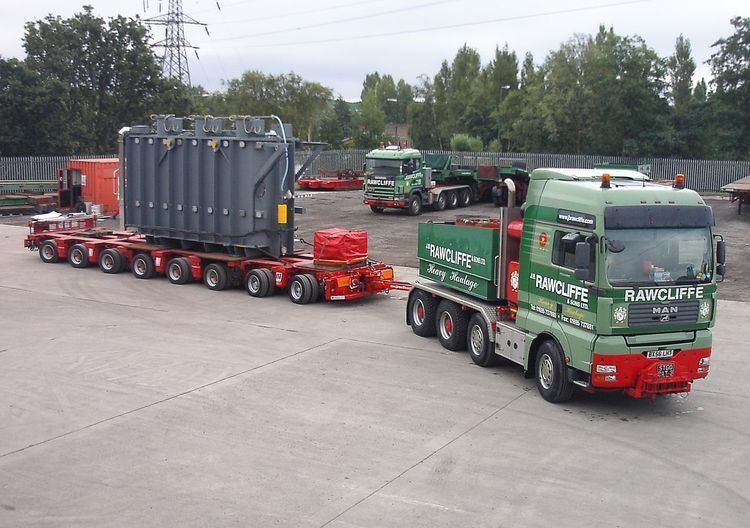 | ||
A drawbar is a solid coupling between a hauling vehicle and its hauled load. Drawbars are in common use with rail transport, road trailers, both large and small, industrial and recreational, and with agricultural equipment.
Contents
Agriculture
Agricultural equipment is hauled by a tractor mounted drawbar. Specialist agricultural tools such as ploughs are attached to specialist drawbars which have functions in addition to transmitting tractive force.
Road
A drawbar is mounted or located on the tractive vehicle and is used to accept the coupling of the load. The direction of haulage may be push or pull, though pushing tends to be for a pair of ballast tractors working one pulling and the other pushing an exceptional load on a specialist trailer.
The drawbar should not be confused with the fifth wheel coupling. The drawbar requires a trailer which either loads the drawbar lightly (for example a small boat trailer, or caravan, where a load of up to ~50 kg (110 lb) is part of correct trailer loading practice), or the load is the weight of the coupling components only (larger trailers, usually but not always with a steerable hauled axle, front or rear). By contrast, the fifth wheel is designed to transmit a major proportion of the load's weight to the hauling vehicle.
Rail
Two or more passenger cars or freight cars may be attached by means of a drawbar. At both extremes there is a regular coupler such as the North American Janney coupler or the Russian SA3 coupler. This drawbar eliminates slack action.
